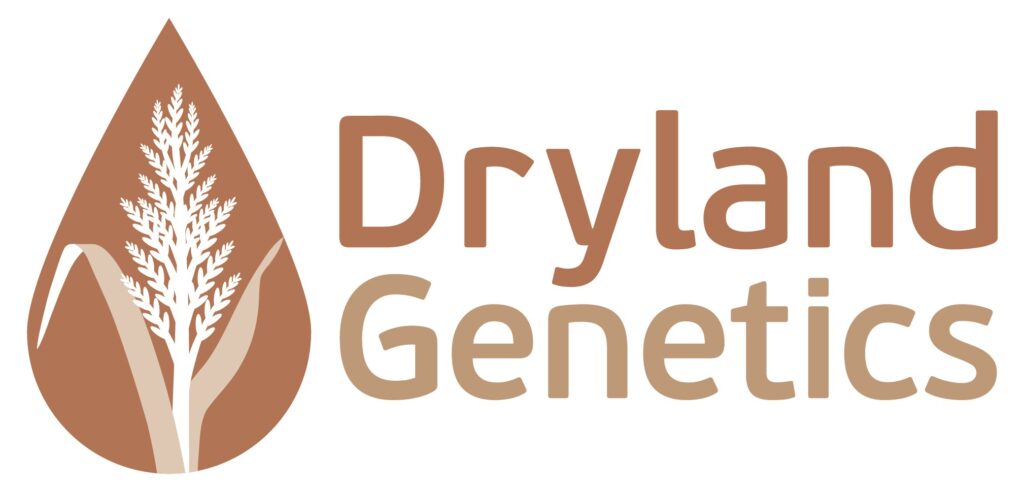Enhanced breeding techniques boost Proso Millet yields.
As the world’s supply of fresh water becomes increasingly scarce – threatening the irrigation our food supply depends upon – Dryland Genetics is on the frontline of addressing the world’s water shortage with its development of water-efficient crops. Based at Iowa State University Research Park in Ames, the company uses advanced breeding techniques to develop water-efficient crops and its current focus is on proso millet, also called prosa. Prosa is an ancient grain grown in Europe and Asia for thousands of years and it produces two times more grain from a single gallon of water as corn, sorghum and other grain crops. It can survive on land where other crops have difficulties. Today, nearly 70% of the world’s fresh water is used by agriculture to grow food. As cities expand, they require more water to meet the daily needs of their residents. Because many of these cities are located in places where water is already scarce, the competition for water between cities and farmers can become intense. Dryland Genetics co-founder James Schnable said, “When there is a limited supply of water and these two needs (ag and human usage), the cities win and farmers find their business models no longer work. As farmers lose access to irrigation water and we lose that agricultural production, how are we going to produce enough grain to feed our people, feed our livestock and do the things that agriculture does to keep the world working?” Trying to answer that question led him, working with his father Patrick Schnable, to found Dryland Genetics. Patrick is a corn geneticist and Director of the Plant Sciences Institute at Iowa State University. James is a plant biologist and Associate Professor at the University of Nebraska-Lincoln. “We are incredibly grateful to the ISU Research Park for their support,” James Schnable said. “They allowed us to custombuild an advanced breeding facility that has allowed us to achieve breeding progress in just a few years which would have taken us decades using conventional approaches.”
Father-Son Breeding Water-Efficient Crops Together
The fact that Patrick and James Schnable are working together to solve one of the world’s present day problems wasn’t an early career vision for the son. James Schnable is a researcher and Associate Professor at the University of Nebraska-Lincoln where his research team studies advanced crop breeding techniques. His father, Patrick, is a distinguished professor at Iowa State University where he holds the Iowa Corn Promotion Board Endowed Chair of Genetics. Together, they are trying to refine ways to grow water efficient crops – most notably Proso Millet – to combat the world’s ever-increasing shortage of fresh water. Although they really enjoy working together, that wasn’t James’ original plan. “I went off to college to do anything other than plant biology because I didn’t want to just turn to my father,” James Schable explained. “It’s really difficult for people who go into science to go home for Thanksgiving and be unable to explain to their family what they are doing. For my entire adult life, I’ve been able to go home and explain my challenges and it’s incredibly nice to be able to discuss those issues with someone who understands.” As father and son get closer to helping solve the challenge of less water for irrigation, it gets even better. “I really enjoy the relationship with my dad,” James Schnable said. “As it’s turning out, it (my career) sure didn’t work out the way I expected.”
Room for Growth
Bringing a new crop to market can be very challenging, but proso millet isn’t new. The crop is already is grown on 500,000 acres of land in the U.S. and many areas around the world, including Australia, China, India, Russia and Ukraine. Additionally, as a replacement for corn, supply chains are already in place and there is an established price floor. And, there is also its relationship with wheat. Proso millet is planted, cared for and harvested with the same equipment used to grow wheat. No huge equipment investments are required to start growing proso millet. The growing seasons for wheat and proso millet fit snugly. “The big reason that wheat and proso millet work well agronomically is they are grown in opposite times of the year,” James Schnable said. “Proso millet is planted in June after the winter wheat crop has been harvested and harvested in August or September.” As a production, the grain of proso millet can be a substitute for corn in a number of areas, including animal feed. Today, proso millet represents just 0.1% of the corn market nationally, but its potential growth is 10x or more. According to 2019 data from the Center for Sustainable Business, sustainability marketed products had 16% of the market but generated 55% of the market growth. Those are numbers that catch your eye. “The single largest use of corn in the U.S. is for livestock (cattle, pigs and chickens) feed,” James Schnable said. “We also eat corn directly and use it for making ethanol. There are good studies out there showing that proso millet can be a substitute for corn in all three of those use cases. But right now, I’m most excited about the potential to substitute proso millet for corn in animal feed. Consumers are increasingly motivated by sustainability. We’ve run the numbers on how many gallons of water could be saved per egg or pork chop by substituting proso millet for corn in chicken or hog feed and the water savings are eye catching.”
Here are some fun facts on prosa:
- Prosa can produce 2x more grain per gallon of water than corn, foxtail millet, barley, sorghum, wheat, oaks and flaxseed.
- Replacing one million acres of dryland corn with Prosa would save 54 billion gallons of water (the annual water usage of two million households);
- Replacing the corn fed to chickens with Proso millet equates to a savings of 20 gallons of water for one egg produced (or 240 gallons of water for a carton of eggs);
- A single pig raised on Prosa-based feed could save 12,000 gallons of fresh water compared to a pig raised on dryland corn.
- Mongolian nomads would fry proso millet in large batches, creating a light and easy to prepare convenience food, functioning a lot likemodern instant noodles.
- Proso millet can produce high yields on land that receives as little as eight inches of total precipitation.
- Polenta, a staple of Italian cuisine dating back to the time of the Roman Empire, was made from proso millet flour until cor, started to be cultivated in Europe in the 16th century.


